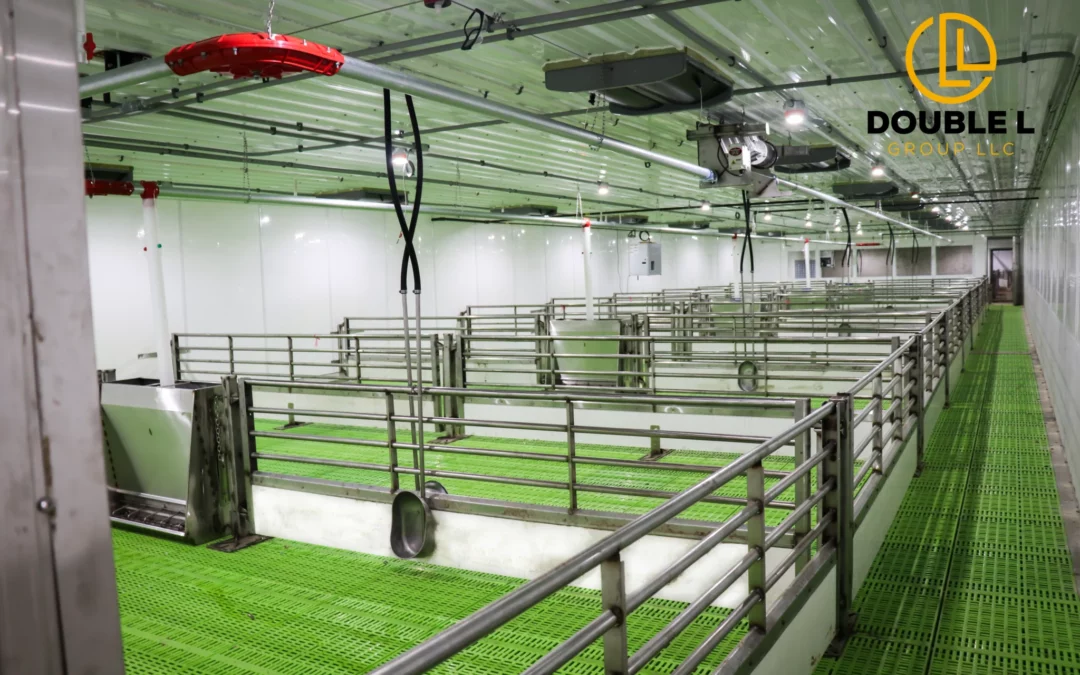Winterizing Your Hog Barns: Preparing for the Cold Weather
As the colder months approach, it’s essential for hog farmers to prepare their barns for winter. Ensuring the comfort and well-being of your pigs during cold weather is not only humane but also crucial for their health and productivity. In this article, we’ll explore key steps to winterize your hog barns effectively.
- Assess Insulation and Ventilation
The first step in winterizing your hog barn is to assess its insulation and ventilation. Proper insulation is vital to retain heat and maintain a comfortable temperature within the barn. Check for any gaps, cracks, or areas where cold drafts could enter. Seal these gaps with insulation materials to keep the cold air out.On the flip side, adequate ventilation is equally crucial. Proper ventilation ensures that moisture and ammonia levels remain low, preventing respiratory issues in pigs. Install adjustable ventilation systems that allow you to regulate airflow as needed.
- Check Heating Systems
Your heating system should be in excellent working condition before winter sets in. Inspect all heaters, fans, and thermostats to ensure they are functioning correctly. Clean or replace air filters to maximize efficiency. In extremely cold regions, consider installing backup heating systems to ensure your pigs stay warm, even during power outages.
- Provide Bedding and Flooring
Hogs need a clean and dry place to rest. Ensure the barn’s flooring is dry and clean by regularly removing manure and soiled bedding. Provide fresh, dry bedding materials like straw or wood shavings to help pigs retain warmth. Well-maintained bedding also helps prevent health issues like frostbite.
- Offer Proper Nutrition
In colder weather, pigs require additional energy to maintain body temperature. Adjust their diet by increasing the calorie content to meet these energy needs. Consult with a nutritionist or veterinarian to formulate a winter-specific feeding plan. Adequate nutrition is essential for keeping pigs healthy and warm during the winter months.
- Monitor Water Supply
Keeping pigs well-hydrated in winter is a challenge. Water can freeze, making it inaccessible to your hogs. Install heated waterers or use insulated water pipes to prevent freezing. Check waterers regularly to ensure they are functioning correctly and that your pigs have continuous access to fresh, unfrozen water.
- Provide Windbreaks
For outdoor hog operations or areas with strong winds, consider installing windbreaks. These can be natural barriers like trees or artificial structures such as wind fences. Windbreaks help reduce wind chill and keep your pigs more comfortable.
- Regular Health Checks
During the winter, it’s essential to monitor your pigs’ health closely. Cold weather can stress them, making them more susceptible to illness. Conduct regular health checks and consult with a veterinarian if any issues arise. Ensure your pigs have access to a warm, dry, and comfortable environment to minimize stress.
By following these steps to winterize your hog barns, you’ll create a more comfortable and healthier living environment for your pigs during the cold weather months. Proper winterization not only improves pig welfare but also contributes to their overall productivity and well-being, ensuring a successful and sustainable hog farming operation.
For more information, visit www.doublel.com/ or call 563-875-6257.
